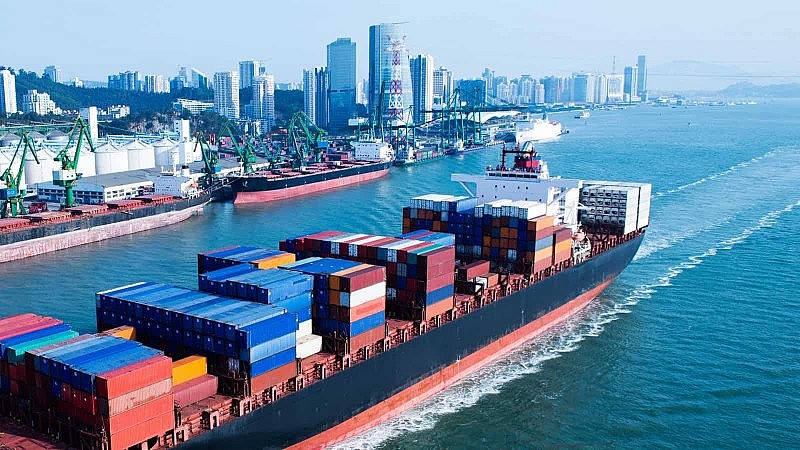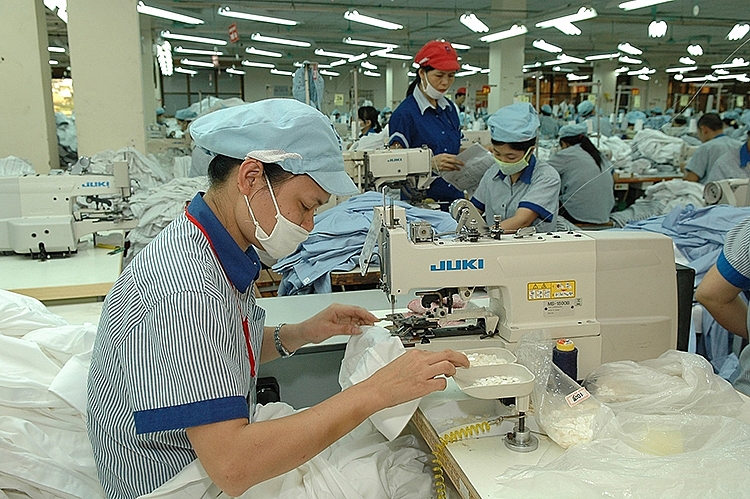 News
News
Import and export hit many records
According to preliminary statistics of the General Department of Customs recently announced, the total import-export turnover of the country in 2022 is 730.21 billion USD. This is the highest number ever. In the context of the world economy facing many difficulties, this number is even more meaningful.
 |
| In 2022, export turnover will reach USD 730.21 billion |
To achieve this figure, over the past time, the Ministry of Industry and Trade and many other ministries and branches have made efforts to facilitate trade and administrative reform so that import and export activities of enterprises are most favorable. Accordingly, the Ministry of Industry and Trade has increased the transfer of self-certification of origin to enterprises. If in the past, most of them were businesses that had to go to functional agencies like the Ministry of Industry and Trade to get a Certificate of Origin (C/O), now, the Ministry of Industry and Trade is following the trend of gradually shifting to self-certified enterprises to reduce time and costs.
In addition, the Ministry of Industry and Trade is promoting the issuance of electronic C/O. Currently, in ASEAN, 100% electronic C/O has been issued. In addition, the Ministry of Industry and Trade is actively issuing electronic C/O and exchanging electronic data, recognizing electronic data so that businesses can enjoy incentives with many partners, including Korea and the EAEU. …
In particular, one of the bright spots of export activities in 2022 is that the group of agricultural products has had impressive growth in many commodity groups such as coffee, tea, pepper, cassava, rice...
The structure of export goods continues to improve in a positive direction, reducing the amount of raw exports, increasing exports of processed products and industrial products, creating conditions for Vietnamese goods to participate more deeply in the chain. global production and supply. The group of processed industrial products continued to account for the main proportion in the export structure, accounting for more than 86% of total export turnover.
Prioritize the development of products of scale and value
In the next period, the goal of import and export activities is to develop import and export of goods in depth. Therefore, in the draft project that the Ministry of Industry and Trade sent to the Prime Minister, for the restructuring of the import and export sector, the Ministry of Industry and Trade determined to prioritize the development of export of products with export scale. large, high competitive advantages (electronics, textiles, footwear, agricultural products, furniture..) associated with diversification and improvement of export product quality. In addition, increasing the export proportion of goods with deep processing content, high technology, high added value, large localization rate, meeting high standards of quality and sustainable development. of markets.
In particular, for the group of fuels and minerals, the export of important minerals will be gradually reduced, even in the form of concentrates. With the group of agricultural, forestry and fishery products, improving productivity, quality, added value, expanding the market and brand of Vietnamese goods. Restructuring export goods with strong focus on deep processing, high quality and high-tech products. Improve the ability to meet regulations, quality standards, food hygiene and safety, social responsibility standards, low-carbon environment and labor.
 |
| The draft scheme also strives that by 2030, the export proportion of processed and manufactured goods will increase to about 90%. |
Particularly for the group of processed and manufactured industrial products, continue to expand exports, effectively exploit the market potential in association with the restructuring of exports towards products with high technology content, high proportion of The localization rate is large and meets the high standards of quality standards and sustainable development of the markets. Increase the export market share of domestic enterprises.
As for the structure of export products, the draft scheme also strives that by 2030, the export proportion of processed and manufactured goods will increase to about 90%, of which the average proportion of technology exports will be and increased to about 70%.
Particularly for new product groups, the Ministry of Industry and Trade determined to review new products, whose current turnover is still low but with high growth potential in the coming time to have policies to encourage development, create a breakthrough. breakthrough in exports such as Halal products to Muslim markets, Kosher products to Jewish markets, fresh fruits to European and US markets, green and cyclical, eco-friendly goods environment and climate, environmental goods and low carbon... Strive by 2030 to have about 10 more product groups join the 1 billion USD group.
Strengthening the diversification of export markets
In order not to be too dependent on some markets and minimize negative effects from trade conflicts, the Ministry of Industry and Trade has determined that it will focus on developing exports through cross-border e-commerce, a distribution system and a distribution system. foreign distribution.
 |
| Diversify export markets |
In particular, for the Asia-Africa market, maintaining export growth at a higher rate than imports and controlling trade deficit from Asian markets and for processed and processed industrial products. Create a breakthrough in expanding potential export markets with Halal products to Muslim markets and Kosher products to Jewish markets (India, other South Asian countries). and Middle East).
Simultaneously, promoting the rapid and strong transition to official trade with bordering countries in association with strengthening the inspection and control of the market to prevent contraband, counterfeit and poor quality goods. quantity, commercial fraud. Striving for the proportion of exports to the Asian market to account for 46-47% by 2030.
For the European market, boosting exports to maintain and expand export market share in Germany, France, the Netherlands, the UK, Italy, Switzerland, Spain and EU member countries. Eurasian Economic Union. Promote the export of products with high technology content, high value-added manufacturing and processing, green and circular, environment and climate-friendly goods, environmental goods and low carbon ... to exploit the tax advantages of the EVFTA , UKVFTA .
At the same time, promoting exports to EAEU countries' markets for food, rice, textiles, leather goods, furniture, seafood, electronic goods, and telephones in association with improving product quality and standards Products. Promote cooperation in manufacturing, high-tech, and energy industries such as clean energy, renewable energy, textiles, electronics, food processing, automobiles and vehicles means of transport.... Striving for the proportion of exports to the European market to account for about 18-19% by 2030.
For the Americas market, continue to consolidate and expand export market share in the US, Canada and Mexico markets with Vietnam's export strengths, especially textiles, footwear, and electronics. , electronics, furniture, mechanics, green and circular goods, environment and climate friendly, environmental goods...
Promote the export of footwear, backpacks, bags, agricultural products, handicrafts, textiles, electricity, electronics, mechanics, electric motors, machinery equipment and furniture to the US region. Latin. Striving to 2025, the proportion of exports to the Americas market will account for about 33-34% by 2030.
Along with the diversification of export markets, the Ministry of Industry and Trade also determined to diversify import markets, especially the import market of raw materials and accessories for production, limiting dependence on one market. ; gradually improve the trade balance with Vietnam's trade deficit in a more balanced direction. Strengthen the flexible and effective import management, ensuring the country's legitimate and legitimate interests and in line with international commitments. Effectively control commercial fraud and improve voluntary compliance of enterprises in line with international commitments. Prioritize the import of machinery, equipment and input materials created from high and advanced technologies that cannot be produced domestically.
Focus on importing from the European Union and the United States advanced technologies associated with the transfer of technology and technical know-how.
In addition, continue to strengthen the export capacity of localities and diversify export areas. Develop new export zones and areas in association with the process of shifting and re-assigning production from economic centers to buffer zones for labor-intensive export industries, bringing into play labor advantages. and low production cost.
In order to maintain sustainable export growth, the Ministry of Industry and Trade has determined that a system of large export enterprises with global competitiveness will be formed. Developing Vietnamese brands abroad. Striving to 2030, the export proportion of domestic enterprises will account for 35-40%, each key export product industry has more than 2-3 Vietnamese enterprises with global brands and competitiveness.
In particular, continue to focus on facilitation and reduction of trade costs through synchronous and efficient development of commercial infrastructure systems, including transport infrastructure, logistics infrastructure, and digital infrastructure in order to optimize optimize production and trade connections, making Vietnam a production and logistics center of the region. Striving to 2030, logistics costs are reduced to equivalent to 10% - 15% of GDP, ranked by the Logistics Performance Index (LPI) in the world reaching 50th or higher.